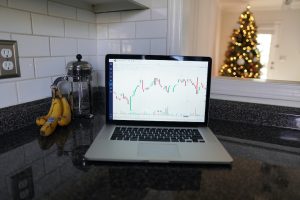Momentum is a key concept in the world of forex trading. It refers to the strength of a particular trend, which is a crucial metric for traders to determine when to enter and exit positions. Understanding how to determine momentum in forex can help traders make more informed decisions and improve their chances of success.
So, what is momentum in forex? In simple terms, momentum refers to the rate at which a currency pair is moving in a particular direction. If a currency pair is moving strongly in one direction, it has positive momentum. On the other hand, if a currency pair is moving weakly or in the opposite direction, it has negative momentum.
To determine momentum in forex, traders use a range of technical indicators and charting tools. Here are some of the most commonly used methods:
Moving Averages
Moving averages are one of the most basic and popular indicators used in forex trading. They are used to smooth out price action and identify trends. Moving averages can be calculated over different time periods, such as 20, 50, or 200 days. When the current price is above the moving average, it is considered to have positive momentum. Conversely, when the current price is below the moving average, it is considered to have negative momentum.
Relative Strength Index
The relative strength index (RSI) is another popular momentum indicator. It measures the strength of a currency pair by comparing the average gains and losses over a given time period. The RSI ranges from 0 to 100, with readings above 70 indicating overbought conditions and readings below 30 indicating oversold conditions. Traders can use the RSI to identify potential trend reversals or entry and exit points.
Moving Average Convergence Divergence
The moving average convergence divergence (MACD) is a technical indicator that measures the difference between two moving averages. It is used to identify changes in momentum and trend. When the MACD line crosses above the signal line, it is considered to be a bullish signal, indicating positive momentum. Conversely, when the MACD line crosses below the signal line, it is considered to be a bearish signal, indicating negative momentum.
Bollinger Bands
Bollinger Bands are a technical indicator that measures volatility and identifies potential trend reversals. They consist of three lines – the upper band, the lower band, and the middle band, which is a moving average. When the price moves outside the upper or lower bands, it is considered to be an indication of positive or negative momentum, respectively.
Ichimoku Kinko Hyo
Ichimoku Kinko Hyo is a Japanese technical analysis method that uses multiple indicators to identify trends and momentum. It consists of five lines – the tenkan-sen, kijun-sen, senkou span A, senkou span B, and the chikou span. When the tenkan-sen crosses above the kijun-sen, it is considered to be a bullish signal, indicating positive momentum. Conversely, when the tenkan-sen crosses below the kijun-sen, it is considered to be a bearish signal, indicating negative momentum.
In conclusion, determining momentum in forex is a crucial aspect of successful trading. Traders can use a range of technical indicators and charting tools, such as moving averages, relative strength index, moving average convergence divergence, Bollinger Bands, and Ichimoku Kinko Hyo, to identify positive or negative momentum and make more informed trading decisions. However, it is important to remember that no single indicator can provide a complete picture of market conditions, and traders should always use a combination of tools and analysis to make trading decisions.





